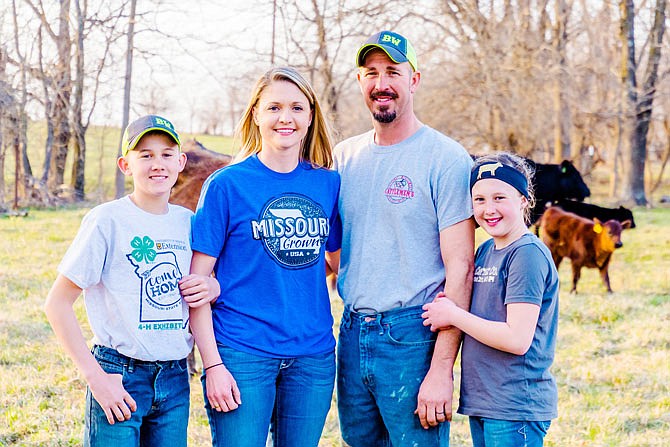KINGDOM CITY - Remember that old ad slogan, "Where's the beef?"
The answer, apparently, is on the plates of students in the North Callaway R-1 school district. In 2019, North Callaway joined the "Mo Beef for MO Kids" program, with a goal of "beefing up" school lunches by doubling the amount of beef served within the district.
"It's a great source of protein, especially for kids who may not get that protein at home, and it's good to know where their food is coming from," said Carrie Bryant, co-owner of Bryant Farms and a liaison between the district and the program.
North Callaway's Mo Beef is currently seeking the help of local cattle producers and businesspeople to either donate or fund the purchase of cull cows for students to enjoy over the next two semesters.
Mo Beef for MO Kids is a joint program of the Missouri Department of Agriculture, the Missouri Beef Industry Council and Opaa Food Service to increase the amount of Missouri-raised beef on school lunch menus. In fall 2017, Mount Vernon became the first school district to participate.
Bryant heard about the program through the Callaway/Montgomery County Cattlemen's Association during a talk by a MBIC spokesperson in 2018.
"They explained the program and how local ranchers would donate a cull cow, one that's no longer fertile, for use as beef instead of taking it to a sale barn," she said. "That way, it counts as a charitable donation."
Cull cows typically fetch little money at a sale barn anyway, she said. She and her friend and fellow beef producer Kristin Benne decided to work on bringing the program to North Callaway.
"The thing that really drew me in is helping kids understand where their food comes from," Bryant explained. "Our kids go to North Callaway schools. I went to North Callaway, and I can see kids are just further removed from the farm."
Benne said her focus was on the nutrition aspect, and promoting local producers.
"The fact was that if you looked at a school lunch menu - both of my children are in the elementary school - it's full of chicken and chicken and a little pork and not much beef," Benne said. "As a beef producer (that's too bad). I think (Mo Beef is) a good way for the kids to see beef doesn't just come from the grocery store; it's locally sourced. Local producers really do want their product in front of local people."
Bryant started by talking with North Callaway's administration, the Missouri Department of Agriculture and Opaa, the food management company that supplies the district's cafeterias.
Talks started in December 2018, and by February, the first locally produced beef showed up on students' plates.
"One week, we had beef quesadillas, meatloaf and cheeseburgers," Superintendent Nikki Kemp said. "We also have the opportunity to bring in classroom discussion - agriculture in the classroom for elementary students, beef in the classroom for food science classes. We'll teach how you can cook it and how to use the different cuts."
According to Mo Beef, on average, only one in 10 school lunches throughout America contains beef. At North Callaway, the average is more like one in five meals, or one per week, Kemp said.
Participation in the program has increased the amount of iron-rich protein on students' plates and created educational opportunities, she said.
Bryant and Benne were among the five producers to donate a cow last year and are still heavily involved. Posters about each of the five donors' farming operations hang in the district's cafeterias.
"We serve as liaisons between cattle producers and school," Bryant said. "We try to get producers in area to identify if they would want to donate, then coordinate with our USDA-approved processor, Davis Meats in Jonesburg, and space out the donations to make sure the beef stays fresh."
Get involved
This year, the program is seeking six producers to donate one cow apiece to the program - that's three cows per semester. Your average donated cow yields about 500 pounds of usable beef, mostly in the form of ground beef and roasts, Benne said.
A donated cow must be able to walk on its own and pass inspection.
Bryant or Benne will help the donor plan a processing date. The donor must haul the cow to Davis Meat Processing - but Opaa covers the cost of processing the cow.
The Missouri Beef Industry Council helps prepare a poster to hang in the district's cafeterias, which might include a picture of the donating family, a description of the farm and perhaps a favorite beef recipe. Cafeteria workers serving a local beef meal will mention the meat's origin as children go through the line.
"Any business, and it doesn't have to be a producer, can donate money to program and we can go and purchase a cull cow," Benne added. "The cost of a cull cow depends on the market but is usually between $800 and $1,000."
Kemp said she loved the enthusiasm from donors last year.
"But now the program isn't as new, the question is, how do we sustain and continue getting donations?" she said.

